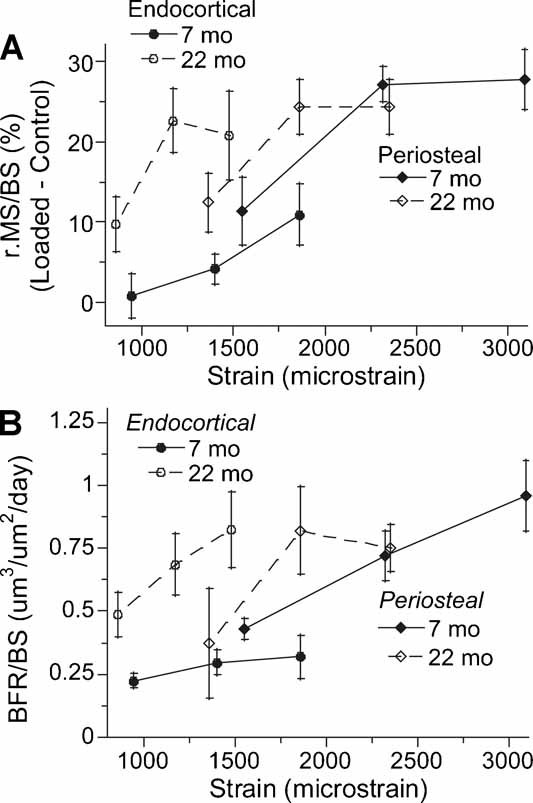Fig. 3.

Cortical bone-formation indices from tibias of loaded mice versus estimated peak compressive strain magnitude (mean ± SE). (A) Relative mineralizing surface and (B) absolute bone-formation rate were significantly greater in 22- than 7-month-old mice at the endocortical surface (p < .001), whereas there was no difference between age groups at the periosteal surface. A dose response is evident, with greater bone formation with increasing strain magnitude. Interestingly, the endocortical and periosteal curves are roughly continuous for the 7-month-old groups, with overlap at the highest endocortical strain and lowest periosteal strain. In contrast, the curves for the 22-month-old groups do not appear to overlap; a maximal response on the endocortical surface occurs at a strain level (∼1500 µɛ) that causes a submaximal periosteal response. Thus it appears that the endocortical and periosteal surfaces have a similar mechanosensitivity in 7-month-old mice, whereas the endocortical surface of 22-month-old mice is surprisingly elevated compared with the periosteal surface.
